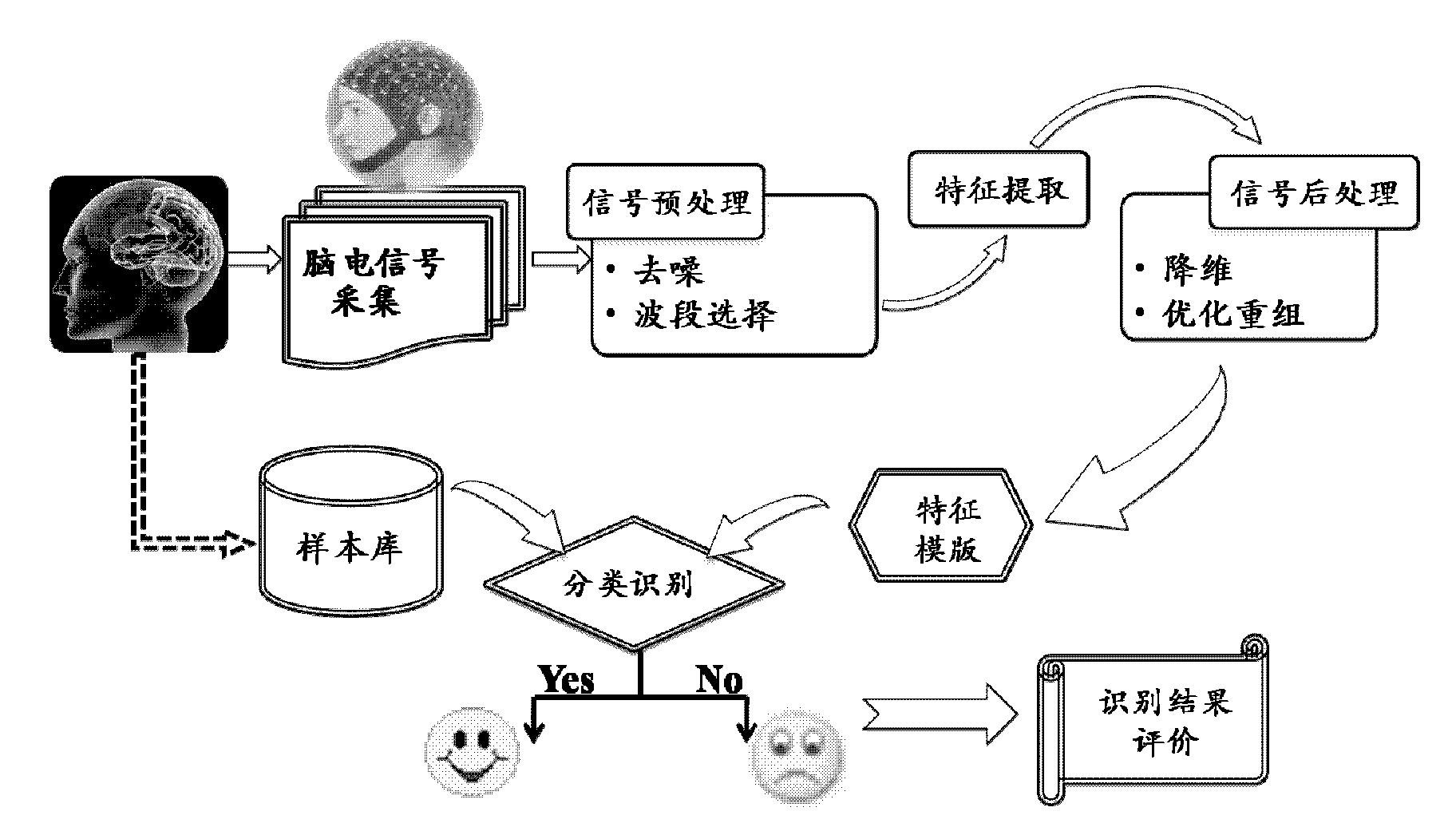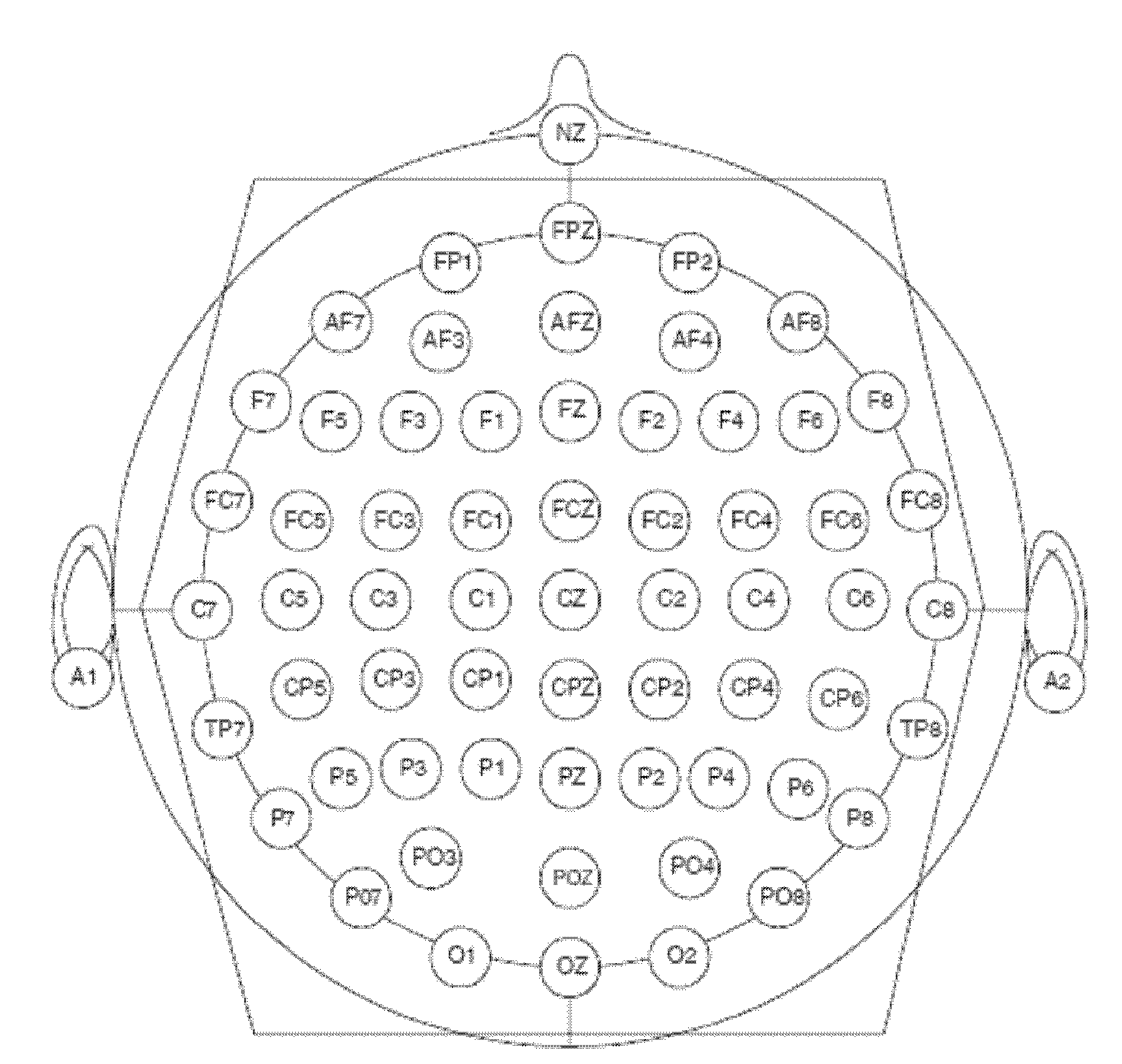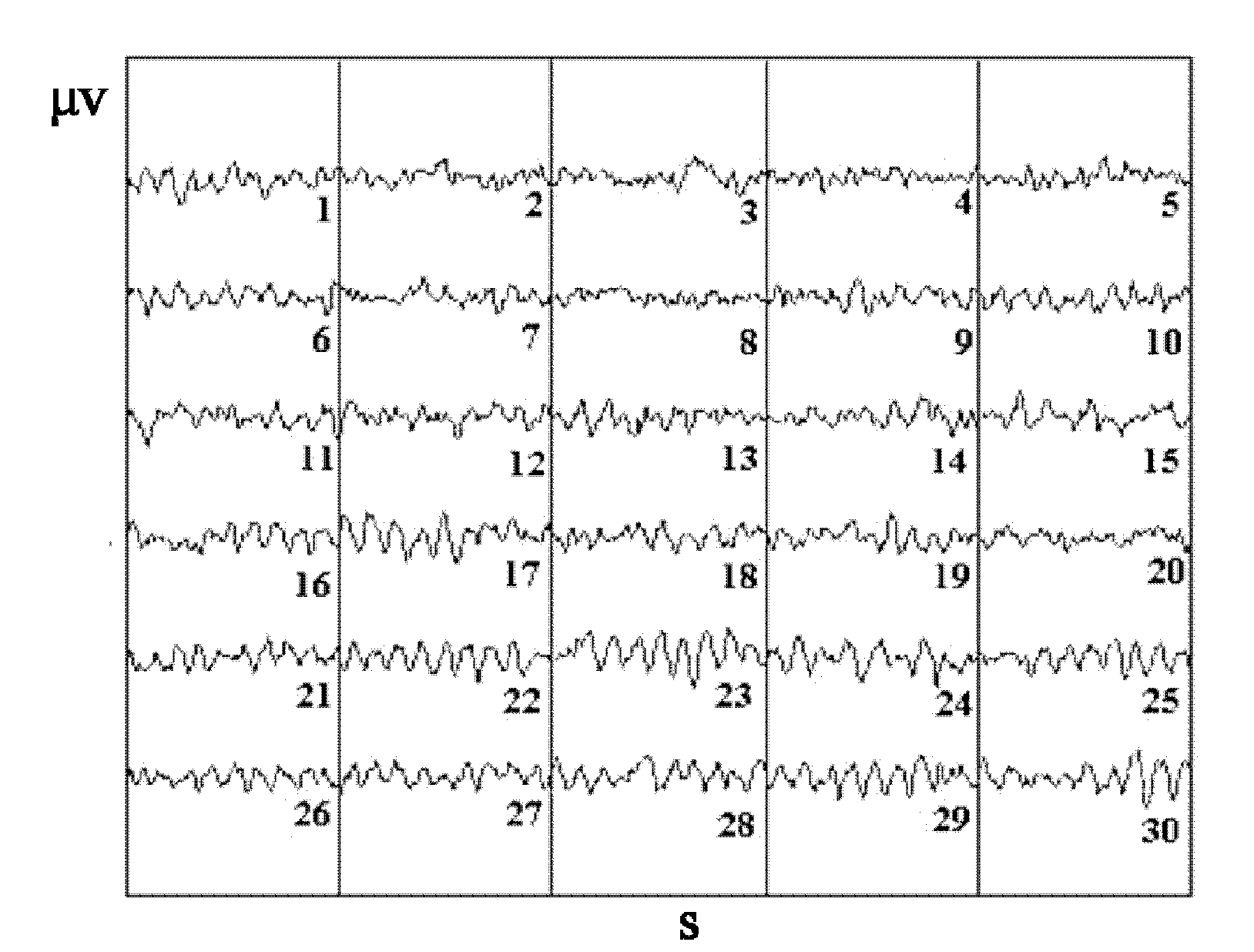Resting electroencephalogram identification method based on bilinear model
An identification and bilinear technology, applied in the field of resting EEG identification system, can solve the problems of loss of identification function, difficulty in duplication and forgery, and recognition rate needs to be further improved
- Summary
- Abstract
- Description
- Claims
- Application Information
AI Technical Summary
Problems solved by technology
Method used
Image
Examples
Embodiment Construction
[0053] The present invention proposes a method for identity recognition using resting EEG signals (Resting EEG), and the key technologies involved include: collection of EEG signals, signal processing, feature extraction, classification and identification, and the like. The technical process is as follows: select the appropriate scalp lead electrodes to collect the EEG signals in the resting state of the subject, perform preprocessing such as denoising on the original EEG signals, and select the relevant wave bands for research. Then a bilinear model was established to extract the EEG features, and the optimized feature parameters were classified, learned and tested through the support vector machine to realize identity recognition. Compared with other biometric identification technologies, the idea of identification based on EEG is novel and has unique and significant advantages. It is a breakthrough in traditional EEG research and provides a new way to explore more diverse ...
PUM
 Login to View More
Login to View More Abstract
Description
Claims
Application Information
 Login to View More
Login to View More - R&D
- Intellectual Property
- Life Sciences
- Materials
- Tech Scout
- Unparalleled Data Quality
- Higher Quality Content
- 60% Fewer Hallucinations
Browse by: Latest US Patents, China's latest patents, Technical Efficacy Thesaurus, Application Domain, Technology Topic, Popular Technical Reports.
© 2025 PatSnap. All rights reserved.Legal|Privacy policy|Modern Slavery Act Transparency Statement|Sitemap|About US| Contact US: help@patsnap.com



